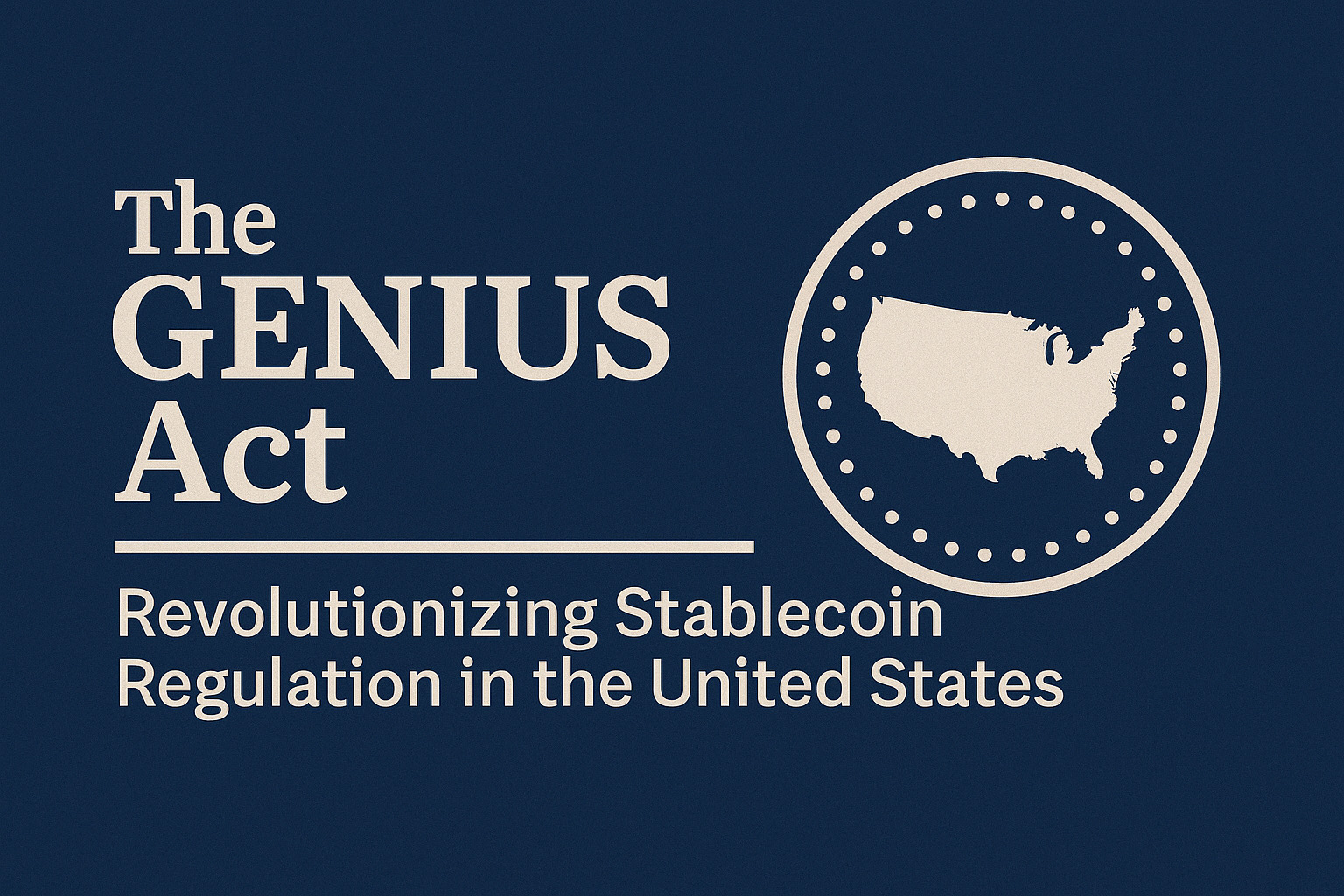Introducing the GENIUS Act and Its Benefits for Stablecoins
1.1 What Is the GENIUS Act?
The GENIUS Act—formally the Guiding and Establishing National Innovation for US Stablecoins Act—is the first U.S. federal law dedicated entirely to payment‑stablecoin regulation. Signed by President Donald Trump on July 18, 2025, it establishes a nationwide framework defining who may issue stablecoins, how they must be backed, and the compliance standards they must meet.
1.2 Why It Mattered
Prior to the Act, stablecoins operated in a legal “gray zone”—growing rapidly but lacking clear federal oversight. The GENIUS Act addresses critical concerns such as systemic risk, consumer protection gaps, and growing foreign competition.
1.3 Key Provisions That Strengthen Stablecoin Reliability
– Full reserve backing using U.S. dollars or highly liquid assets such as Treasuries
– Mandatory registration and regulatory alignment with the Bank Secrecy Act (AML/KYC, sanctions compliance, freeze/burn authority)
– A licensing pathway through regulators such as the OCC, available to approved banks and nonbank entities
– Custody rights explicitly granted to banks and custodians for stablecoins, private keys, and reserves
1.4 Timelines and Enforcement
The Act takes effect 18 months after passage, or 120 days after final regulations are issued, whichever comes first. Additionally, there is a three‑year grace period after enactment, during which non‑compliant stablecoins can no longer be marketed as ‘payment stablecoins’ in the United States.
Why the GENIUS Act Matters for the Stablecoin Ecosystem
2.1 Improved Transparency and Trust
The Act’s reserve‑backing and audit requirements increase transparency, building trust among both consumers and institutional players.
2.2 Boost to U.S. Treasury Demand
Stablecoin issuers must back tokens with U.S. dollars or Treasuries, boosting demand for U.S. debt and supporting the Treasury market.
2.3 Guarding Against Illicit Finance
Aligning issuance with the Bank Secrecy Act and enabling freeze/burn powers strengthens national security and combats illicit use.
2.4 Regulatory Clarity Encourages Adoption
By defining who may issue stablecoins and under what conditions, the GENIUS Act eliminates ambiguity and encourages wider adoption by traditional financial institutions and fintechs.
2.5 Shifting Toward Payment Utility
The Act prohibits yield‑bearing stablecoins, redirecting issuers toward payment‑focused models. This shift may accelerate growth in tokenized real‑world assets and other yield‑generating instruments.
The GENIUS Act’s Ripple Effect in Puerto Rico and International Banking
3.1 Puerto Rico as a Strategic Financial Hub
Puerto Rico, as a U.S. territory, benefits from a unique tax and regulatory environment. It has emerged as a crypto‑friendly jurisdiction through incentives under Act 60 (2019), which consolidated previous tax benefit programs. Several international banks already based in Puerto Rico have integrated digital asset services, and the GENIUS Act strengthens their positioning.
3.2 How GENIUS Benefits Puerto Rico’s Banks
Puerto Rico’s international banks operate under U.S. federal oversight while enjoying local tax incentives. The GENIUS Act amplifies their opportunities by:
– Allowing banks in Puerto Rico to become permitted payment stablecoin issuers
– Granting explicit custodial authority for stablecoins and digital asset reserves
– Enabling services to both U.S. and international clients due to their license structure
– Leveraging Puerto Rico’s favorable 4% tax regime on eligible export services, enhancing profitability
This combination of regulatory clarity, custody capabilities, and favorable tax treatment positions Puerto Rico as a potential hub for cross‑border stablecoin and digital asset services.
3.3 Conclusion: Bridging Innovation, Regulation, and Global Finance
The GENIUS Act transforms the U.S. stablecoin market by creating clarity, trust, and a robust legal structure. Puerto Rican international banks, with their dual access to U.S. regulation and international markets, are uniquely positioned to capitalize on these reforms. By combining custody, issuance, and cross‑border services within a competitive tax framework, they could become the cornerstone institutions in the next phase of digital finance.

